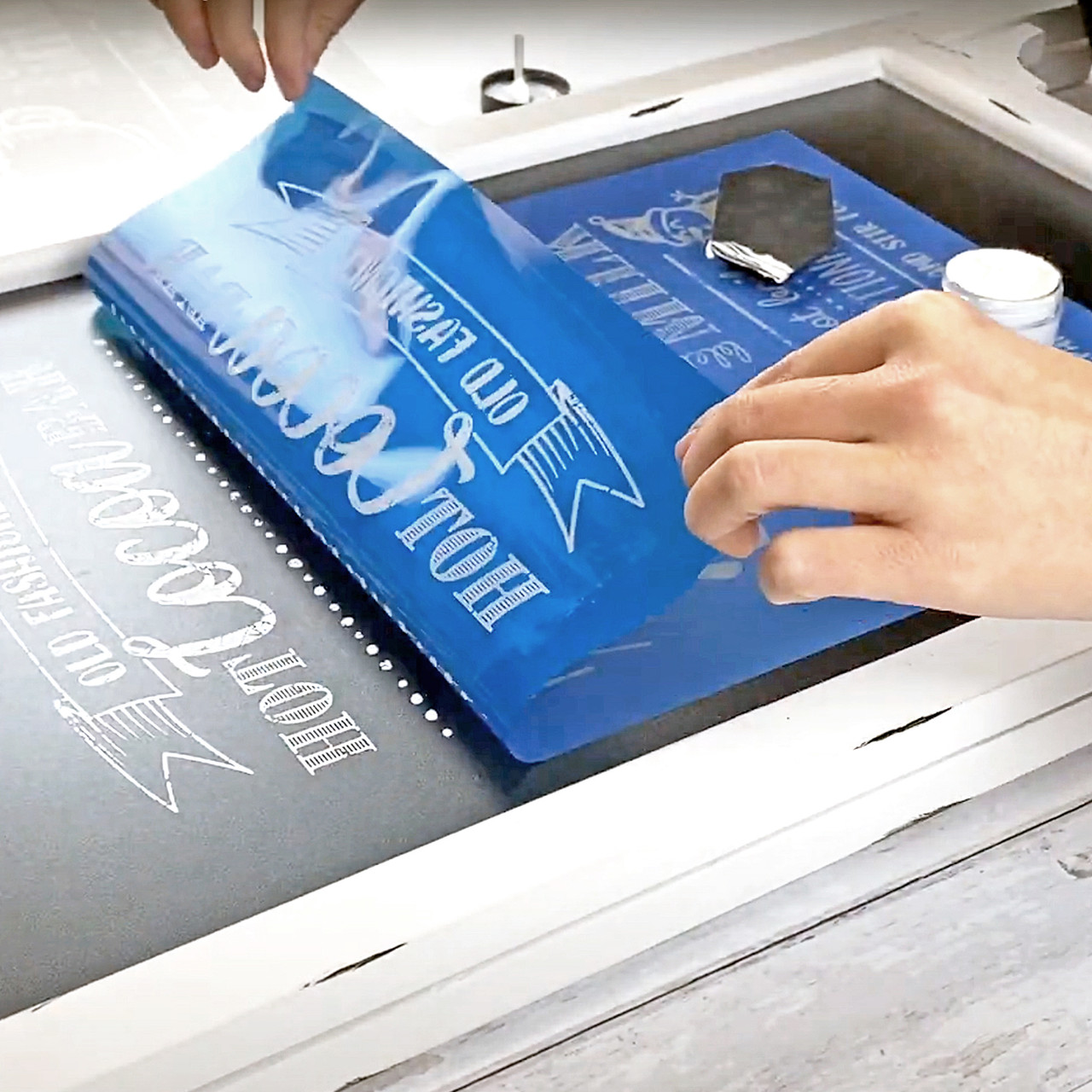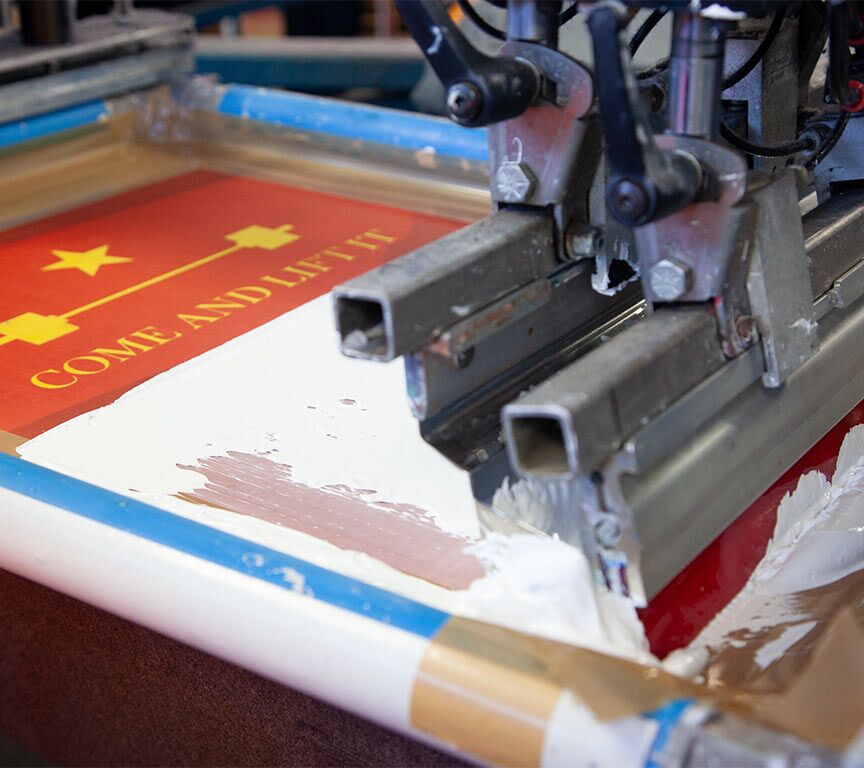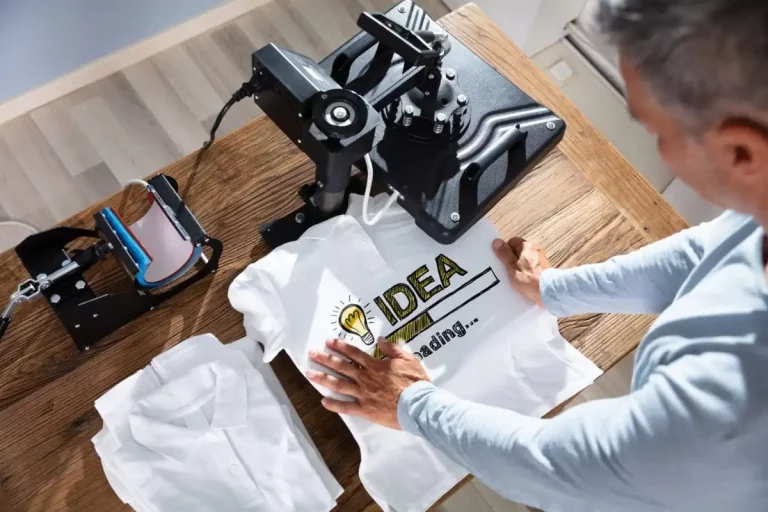High-Quality Custom Screen Printing for Team Apparel
High-Quality Custom Screen Printing for Team Apparel
Blog Article
Screen Printing Uncovered: Every Little Thing You Need to Know Concerning Tee Shirt and Garment Printing Techniques
If you've ever before questioned just how those vibrant designs wind up on your favored t-shirts, you're in the ideal area. Screen printing is a remarkable method that integrates art with strategy, providing limitless possibilities for creativity. Comprehending the principles, from devices to ink choices, can greatly affect your results. All set to check out the vital elements that make screen printing an art form? Allow's discover the details that can raise your projects.
The Fundamentals of Screen Printing: Just How It Works
When you plunge right into display printing, you'll uncover it's both an art and a scientific research. At its core, screen printing involves creating a stencil, or screen, that enables ink to go through only in details locations (screen printing kit). You begin by selecting your design and preparing your screen with a light-sensitive solution. Once you expose this solution to light, it sets, leaving your style as a negative room.
Following, you'll mix your inks and prepare your printing surface. Position the screen over the material, then use a squeegee to press ink with the display onto the garment. This process needs accuracy, as you want clear, vibrant prints. After printing, you'll heal the ink with warmth, guaranteeing it follows the fabric and lasts via cleans. Each step is essential, and understanding them will raise your display printing abilities, transforming straightforward garments into unique, meaningful pieces.
Kinds Of Display Printing Strategies
As soon as you understand the essentials of screen printing, it's time to check out the different methods that can raise your designs. One popular method is traditional screen printing, where ink is pressed with a stenciled display.
If you're going for fine details, think about discharge printing. This technique removes color from the textile, leaving a soft, vintage look. One more alternative is plastisol printing, recognized for its toughness and dazzling shades, making it a favorite for numerous brands. Experiment with halftone printing to develop gradient results and detailed layouts. Each method has its distinct charm, so do not hesitate to try them bent on discover what fits your design best!
Crucial Devices for Display Printing
To accomplish magnificent cause screen printing, having the ideal equipment is essential. First, you'll require a durable display printing frame, which holds the mesh that moves your style onto the garment. Next off, spend in high-grade mops; these are essential for using ink evenly throughout the screen. You'll additionally need an excellent exposure unit to develop your screens, along with a washout cubicle for cleaning them after usage. A trustworthy warm resource, like a conveyor clothes dryer or warm press, is crucial for treating your prints to guarantee long life. Do not neglect a correct work space, equipped with tables and storage for your supplies. Protective gear, such as masks and gloves, will certainly maintain you safe from chemicals and inks. With the right devices, you'll be well on your way to producing professional-quality prints.
Choosing the Right Inks and Products
When selecting inks and products for display printing, you need to take right into account the sort of ink that works best for your job. Think of textile compatibility to ensure your designs look last and wonderful long. Likewise, check out eco-friendly ink alternatives to make your printing procedure much more sustainable.
Kinds of Screen Inks
Selecting the ideal screen ink is crucial for accomplishing dynamic, durable prints that fulfill your task's demands. There are a number of kinds of display inks to analyze. Plastisol ink is prominent for its flexibility and simplicity of use, providing exceptional shade opacity on dark fabrics. Water-based ink, on the other hand, provides a softer feeling and is environmentally friendly, making it perfect for those seeking to reduce their environmental effect. Release inks eliminate dye from the fabric, causing a soft, classic look but need specific handling. Specialty inks, such as metallic or glow-in-the-dark, can include one-of-a-kind results to your designs. Review your project requirements and select the ink that straightens finest with your wanted outcome.

Textile Compatibility Factors To Consider
Comprehending material compatibility is important for achieving high-quality screen prints, specifically considering that different products respond distinctly to numerous inks. When picking inks, think about the material type-- cotton, polyester, or blends. For cotton, water-based inks work well, providing softness and breathability. Polyester, on the other hand, often calls for plastisol inks for far better attachment and dynamic shades. If you're publishing on blends, you could require to utilize a mix of both types. Constantly test your inks on sample textile to assure they stick appropriately and maintain color stability. Furthermore, keep in mind that textile weight and texture can impact the final outcome, so selecting the ideal ink and product combo is important for your project's success.
Eco-Friendly Ink Options
Environmentally friendly inks are becoming a preferred selection for display printers that wish to reduce their environmental influence while maintaining quality. When choosing inks, consider water-based inks, which are less harmful and much easier to clean up contrasted to standard solvents. These inks bond well with fabrics, providing dynamic results without hazardous chemicals. You could also discover eco-solvent inks that utilize less volatile organic substances (VOCs), making them a much safer choice for both your health and the planet.
Additionally, seek inks made from renewable energies, such as soy or vegetable-based choices. By selecting the right inks and materials, you'll not only develop spectacular designs but likewise add to a more sustainable printing procedure. Make the button, and your prints will certainly reflect your dedication to the setting!
Preparing Your Style for Screen Printing

File Format Needs
To ensure your design looks sharp and vivid on material, you'll require to pay attention to file format requirements for screen printing. Beginning with vector documents like AI or EPS, as they can be scaled without losing top quality. If you use raster pictures, choose high-resolution files, such as TIFF or PNG, ideally at 300 DPI. Stay clear of utilizing JPEGs, as they can shed clearness when resized. Additionally, make sure your layout has a transparent background to avoid undesirable white edges on your prints. Keep shade settings in mind; CMYK is common for display printing, so convert your RGB designs accordingly - screen printing kit. By following these standards, you'll set your artwork up for an effective print.
Color Separation Techniques
Shade separation is a necessary action in preparing your design for screen printing, and grasping it can substantially enhance your print high quality. You'll need to damage your style into individual colors, as each shade calls for a different screen during printing. This accuracy Look At This not just ensures exact color depiction yet additionally enhances the printing process.
Resolution and Size
Accomplishing the finest lead to display printing begins with assuring your layout has the best resolution and size. Preferably, your artwork should be at least 300 DPI (dots per inch) for sharp, clear prints. If you use reduced resolution, your end product might look pixelated and unprofessional.
When it involves dimension, think about the measurements of your print location. Design your art work to match the last print size, ideally developing it in the real measurements you'll be publishing. By doing this, you'll avoid any type of unanticipated scaling problems.
Always examine your layout in both vector and raster formats. Vector graphics can be scaled without shedding quality, making them excellent for screen printing. Preparing appropriately will assure your layout looks impressive on every garment!
Step-by-Step Screen Printing Process
Screen printing is a vibrant process that permits you to produce lively layouts on various surface areas. To begin, you'll require a display, solution, and your chosen ink. Prepare your screen by cleaning it completely. Next, use the emulsion uniformly and allow it completely dry in a dark location. Once completely dry, expose your display to light with your design positioned on it, which will certainly set the solution where the light hits, developing a stencil - screen printing kit.
Pour ink onto the screen and make use of a squeegee to push the ink via the pattern onto the textile. Lift the screen very carefully and allow the print dry. You've effectively screen published your style.
Tips for Effective Screen Printing Projects
While you're diving into your screen printing projects, bear in mind that preparation is key to success. Begin by gathering all your materials-- inks, screens, garments, and mops. A tidy workspace aids stop undesirable mistakes, so clean up prior to you start.
Following, validate your art work is high-resolution and correctly sized for your garment. Test your screen for appropriate exposure and clean it extensively to stay clear of smudges. When mixing your inks, adhere to the manufacturer's standards to achieve the ideal consistency.
Throughout printing, apply even pressure with your squeegee for regular results. Do not rush; take your time to confirm each print meets your standards. After printing, let your garments completely dry completely prior to handling or packaging them.
Last but not least, always maintain a sample of your benefit future referral. In this manner, you can assess your progress and enhance your techniques over time. Delighted printing!

Frequently Asked Inquiries
How Long Does It Take to Establish a Screen Printing Task?
Establishing a display printing task typically takes about thirty minutes to an hour. You'll prepare the displays, mix inks, and adjust the press. The time differs based on complexity and experience, so stay arranged!
Can I Publish on Various Material Types Making Use Of the Exact Same Technique?
Yes, you can publish on various material kinds utilizing try this website the exact same strategy, but you'll require to adjust your inks and setups. Some materials soak up ink in a different way, so trying out warranties the very best outcomes for each material.
What Are Common Mistakes to Stay Clear Of in Display Printing?
When display printing, avoid typical blunders like using the wrong ink, disregarding correct exposure times, or missing pre-press checks. Always test your setup and maintain clean displays to guarantee high quality outcomes each time.
How Can I Correctly Tidy and Maintain My Screen Printing Tools?
To properly clean and keep your screen printing equipment, you need to frequently clean screens with suitable solvents, check squeegees for wear, and guarantee all tools are stored dust-free and dry. Consistency improves and protects against costly repairs performance.
Is Display Printing Environmentally Pleasant Contrasted to Various Other Approaches?
Screen printing can be a lot more eco-friendly than other techniques, particularly if you use water-based inks and eco-conscious materials. By choosing sustainable supplies and practices, you reduce waste and decrease your effect on the world.
Display Printing Uncovered: Everything You Need to Know About Tee Shirt and Garment Printing Strategies
At its core, display printing entails producing a stencil, or display, that permits ink to pass via just in details locations. Setting the screen over the material, then use a squeegee to press ink via the screen onto the garment. One prominent method is typical display printing, where ink is pressed via a stenciled screen.When selecting inks and products for screen printing, you need to take right into account the type of ink that functions best for Related Site your task.
Report this page